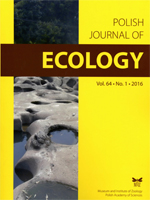The Grayling Hipparchia semele L. belongs to rapidly vanishing butterfly species in its central and western European range. We studied larval microhabitat preferences of two last viable populations of the Grayling in the Czech Republic. The field study was carried out at two types of human-influenced habitats: a fly ash deposit — a postindustrial site partly left under natural succession processes, and a semi-natural extensively grazed xeric calcareous grassland in May and June 2012 and 2013. During five nights, 89 caterpillars were found (fly ash deposit: 8, xeric grassland: 81). The caterpillars were found on steeper slopes covered with sparse shrubs and shorter herbaceous vegetation with high amount of bare soil or rocks. The most frequently observed behaviour was feeding on fine-leaf fescue grasses with varied size of tufts and rather smaller height up to 20 cm. Usage of larval preferences in a way of active conservation management application is discussed.
BioOne.org will be down briefly for maintenance on 17 December 2024 between 18:00-22:00 Pacific Time US. We apologize for any inconvenience.
How to translate text using browser tools
1 March 2016
Larval Habitat Preferences of Vanishing Butterfly Hipparchia semele L.: Surviving on Human-Altered Habitats in the Czech Republic, Central Europe
Tomas Kadlec,
Lada Jakubikova,
Petr Herman
ACCESS THE FULL ARTICLE

Polish Journal of Ecology
Vol. 64 • No. 1
March 2016
Vol. 64 • No. 1
March 2016
conservation management
larval ecology
post-industrial sites
satyrid butterflies
semi-natural grasslands




